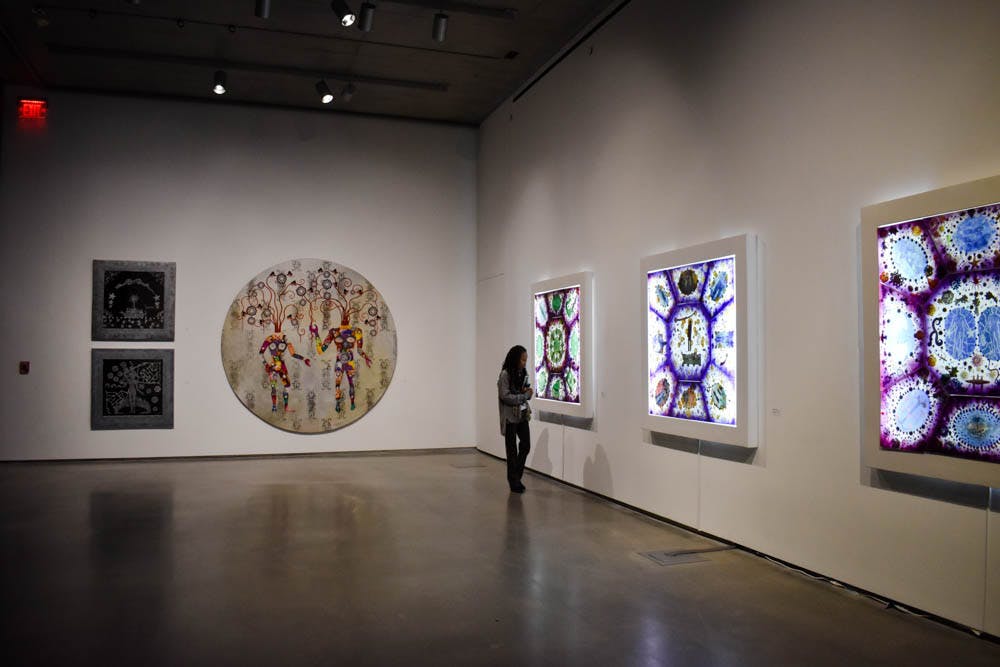When walking through the Center for the Study of Slavery and Justice and the Cohen Gallery in the Granoff Center for the Creative Arts, students will notice a new collection of vibrant and communicative works.
The pieces belong to a dual installation, which opened Oct. 29, and explores the complex history of slavery, colonialism, race, migration and religion in Haiti and the broader Caribbean.
Titled “The Art of Embedded Histories,” the exhibit was created by revered Haitian-born artist Edouard Duval-Carrié, and it marks the latest partnership between Duval-Carrié and Anthony Bouges, professor of humanities and critical theory and the inaugural director of the CSSJ, who curated the exhibit. The two men have worked together since 2011.
“Historically there has never been much attention to the production (of Haitian and Caribbean) art,” Duval-Carrié said.
The new exhibit strives to describe Haiti in Haitian terms, preventing the country’s people from being subjected to “descriptions by others … making sure people understand … the history behind (the art) and the content and what it is trying to say whether it is political, cultural, social, economic,” he added.
The exhibit, which is split in two sections under the subtitles “The Kingdom of this World” and “Memory and Embedded History,” gave Duval-Carrié a valuable opportunity to better understand the country of his birth. “I am still trying to understand the place, (Haiti) is fraught with complications,” Duval-Carrié said.
The eleven pieces across the two galleries use a multitude of mediums: back-lit Plexiglass engravings, mixed media embedded in resin and mixed media on paper and aluminum. The exhibit features pieces with vibrant colors and awe-inspiring visuals, but Duval-Carrié said he hopes that viewers will not be so distracted by the works’ beauty that they forget to think critically about each piece.
“It might be effectively beautiful, but at the same time, what’s the intent? What’s the context? What’s the content? What’s the discourse behind it?” Duval-Carrié said. He hopes that the exhibit will therefore be an “exercise in how visuals can contribute” to dispelling negative stereotypes about Haiti and, in turn, advancing a more progressive view of a Haitian society brimming with history, culture and artistry.
Bouges said the exhibit fits well within the messaging of the CSSJ and the Brown Arts Initiative. “What we want to do is to really think about artists who are making interventions in the world that we live in today and make us think a little differently. Edouard’s work is about trying to rethink the history of Haiti, and the history of Haiti is very important (for us in the CSSJ) because Haiti was the first and only successful slave revolution in the world and reshaped the entire Atlantic world of slavery,” Bouges said.
Felicia Denaud GS said she felt moved by Duval-Carrié’s work, and she believes that the exhibit captures Haiti as a trailblazing nation. “I always say Haiti is from the future,” Denaud said. “It gives us a sense of what the future can be, and (Duval-Carrié) visualizes that.”





